Mohamed Aly
MindX: Denoising Mixed Impulse Poisson-Gaussian Noise Using Proximal Algorithms
Aug 28, 2016



Abstract:We present a novel algorithm for blind denoising of images corrupted by mixed impulse, Poisson, and Gaussian noises. The algorithm starts by applying the Anscombe variance-stabilizing transformation to convert the Poisson into white Gaussian noise. Then it applies a combinatorial optimization technique to denoise the mixed impulse Gaussian noise using proximal algorithms. The result is then processed by the inverse Anscombe transform. We compare our algorithm to state of the art methods on standard images, and show its superior performance in various noise conditions.
TRex: A Tomography Reconstruction Proximal Framework for Robust Sparse View X-Ray Applications
Jun 11, 2016



Abstract:We present TRex, a flexible and robust Tomographic Reconstruction framework using proximal algorithms. We provide an overview and perform an experimental comparison between the famous iterative reconstruction methods in terms of reconstruction quality in sparse view situations. We then derive the proximal operators for the four best methods. We show the flexibility of our framework by deriving solvers for two noise models: Gaussian and Poisson; and by plugging in three powerful regularizers. We compare our framework to state of the art methods, and show superior quality on both synthetic and real datasets.
LABR: A Large Scale Arabic Sentiment Analysis Benchmark
May 03, 2015

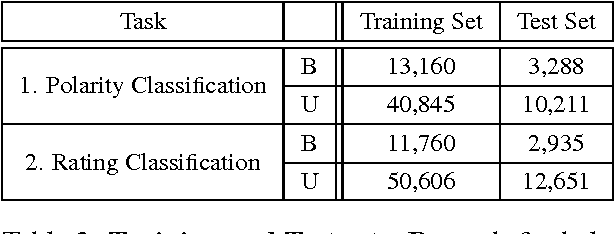

Abstract:We introduce LABR, the largest sentiment analysis dataset to-date for the Arabic language. It consists of over 63,000 book reviews, each rated on a scale of 1 to 5 stars. We investigate the properties of the dataset, and present its statistics. We explore using the dataset for two tasks: (1) sentiment polarity classification; and (2) ratings classification. Moreover, we provide standard splits of the dataset into training, validation and testing, for both polarity and ratings classification, in both balanced and unbalanced settings. We extend our previous work by performing a comprehensive analysis on the dataset. In particular, we perform an extended survey of the different classifiers typically used for the sentiment polarity classification problem. We also construct a sentiment lexicon from the dataset that contains both single and compound sentiment words and we explore its effectiveness. We make the dataset and experimental details publicly available.
Real time Detection of Lane Markers in Urban Streets
Nov 26, 2014



Abstract:We present a robust and real time approach to lane marker detection in urban streets. It is based on generating a top view of the road, filtering using selective oriented Gaussian filters, using RANSAC line fitting to give initial guesses to a new and fast RANSAC algorithm for fitting Bezier Splines, which is then followed by a post-processing step. Our algorithm can detect all lanes in still images of the street in various conditions, while operating at a rate of 50 Hz and achieving comparable results to previous techniques.
* 6 pages
Arabic Spelling Correction using Supervised Learning
Sep 29, 2014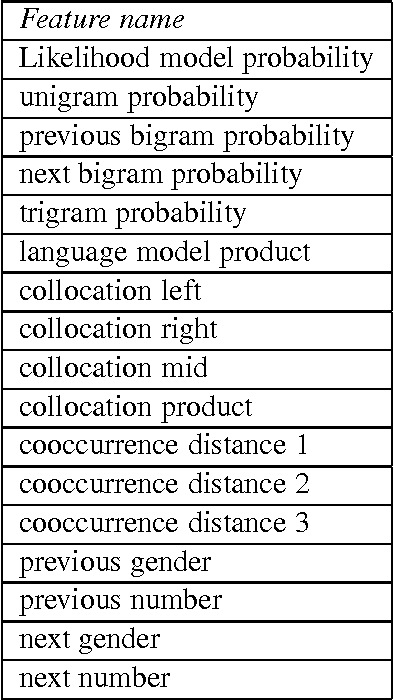
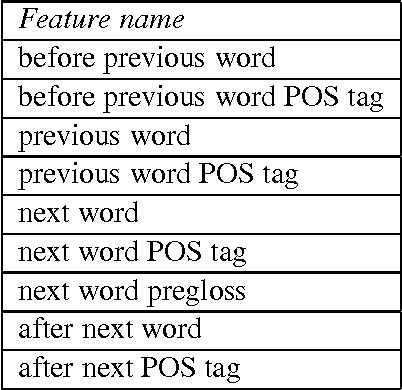
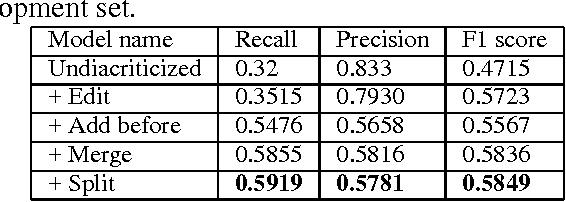
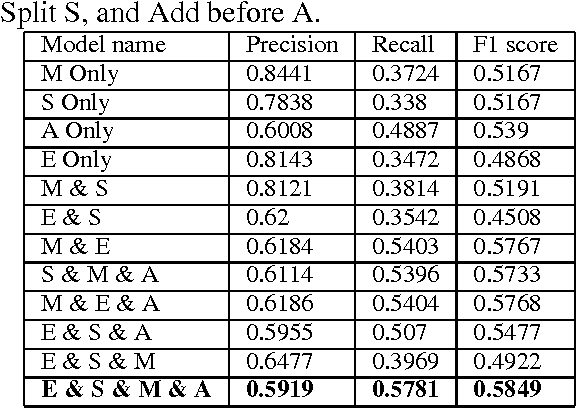
Abstract:In this work, we address the problem of spelling correction in the Arabic language utilizing the new corpus provided by QALB (Qatar Arabic Language Bank) project which is an annotated corpus of sentences with errors and their corrections. The corpus contains edit, add before, split, merge, add after, move and other error types. We are concerned with the first four error types as they contribute more than 90% of the spelling errors in the corpus. The proposed system has many models to address each error type on its own and then integrating all the models to provide an efficient and robust system that achieves an overall recall of 0.59, precision of 0.58 and F1 score of 0.58 including all the error types on the development set. Our system participated in the QALB 2014 shared task "Automatic Arabic Error Correction" and achieved an F1 score of 0.6, earning the sixth place out of nine participants.
 Add to Chrome
Add to Chrome Add to Firefox
Add to Firefox Add to Edge
Add to Edge